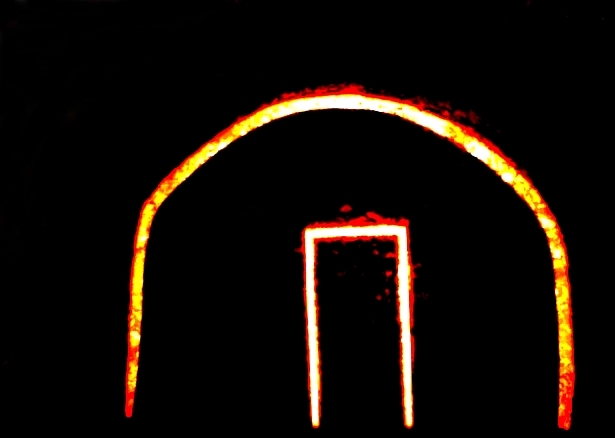Organic Light
"I've learned from Fredegiso of Tours that darkness and light are degrees of the same phenomenon, and from John Cage that silence can be heard, therefore darkness can be seen. From the 19th- century Swiss set designer and theorist Adolphe Appia I've learned that shadows are the substance of vision, and from author Italo Calvino that the most effective images are those that let people create their own mental view of what they're looking at".
(Fabrizio Crisafulli interviewed by Mike Clark, in ‘Avant-gard Artistry: Lighting Takes Center Stage in the Works of Fabrizio Crisafulli’, Lighting Dimension, New York, April 1997).
“A guideline for my theatre work is that on stage light should take on a role which is similar to that of natural light in the world. The issue isn’t imitating natural light, but rather the ability of light to become a vital substance in theatre, even in its most abstract interpretation. An essential, primary and generative element. Light could free itself from the effect-producing and illustrative role, and the layout function, prepared in the final days of rehearsals, where standard practice often relegates it, and which hardly work with theatre’s ability to echo reality. Another conviction I have, which has been reinforced with experience, concerns the need to overcome two quite common misconceptions about lighting practices in the theatre. The first is that stage lighting belongs to an eminently technical sphere, the second is that it belongs to an eminently visual sphere. I think that the fundamental qualities of light in terms of the theatre lie in its ability to mould space and time, action and dramatic construction”.
(Fabrizio Crisafulli, Active Light: Issues of Light in Contemporary Theatre, Dublin: Artdigiland, 2013, p. 189).
“[…] I think my work with light is influenced by the fact I was born in Catania and have watched many times the lava flowing from Etna at night. My way of thinking of the theatrical light as matter and energy, and also some of my recurrent choices, such as making light lines “walk”, or making the objects become “incandescent”, probably come from there. Not by chance, the first time I realised this was when I made Pietraluce, a light installation at the lava stone-built Roman amphitheatre in Catania. When I created those irregular lines of light on the lava building, following the shapes of the architecture, I had the impression that the lava was becoming incandescent again, and perceived a connection with my past. Even other choices, in my work, could come from this. I often use to pull out a light from another. In other words I dim a light down, revealing another light which was already there, but not visible. This is the way the nature works. I saw it many times when I went to see the eruptions closely. I usually go up there during the day, so at first I perceive the lava and the explosions of magma just like stones and smoke, But when darkness slowly comes, stones and smoke become stripes and “fountains” of fire”.
(Fabrizio Crisafulli interviewd by Silvia Tarquini, in ‘Luce necessaria, luce visionaria: dialogue between Luca Bigazzi and Fabrizio Crisafulli', Luce, 312, June 2015).

